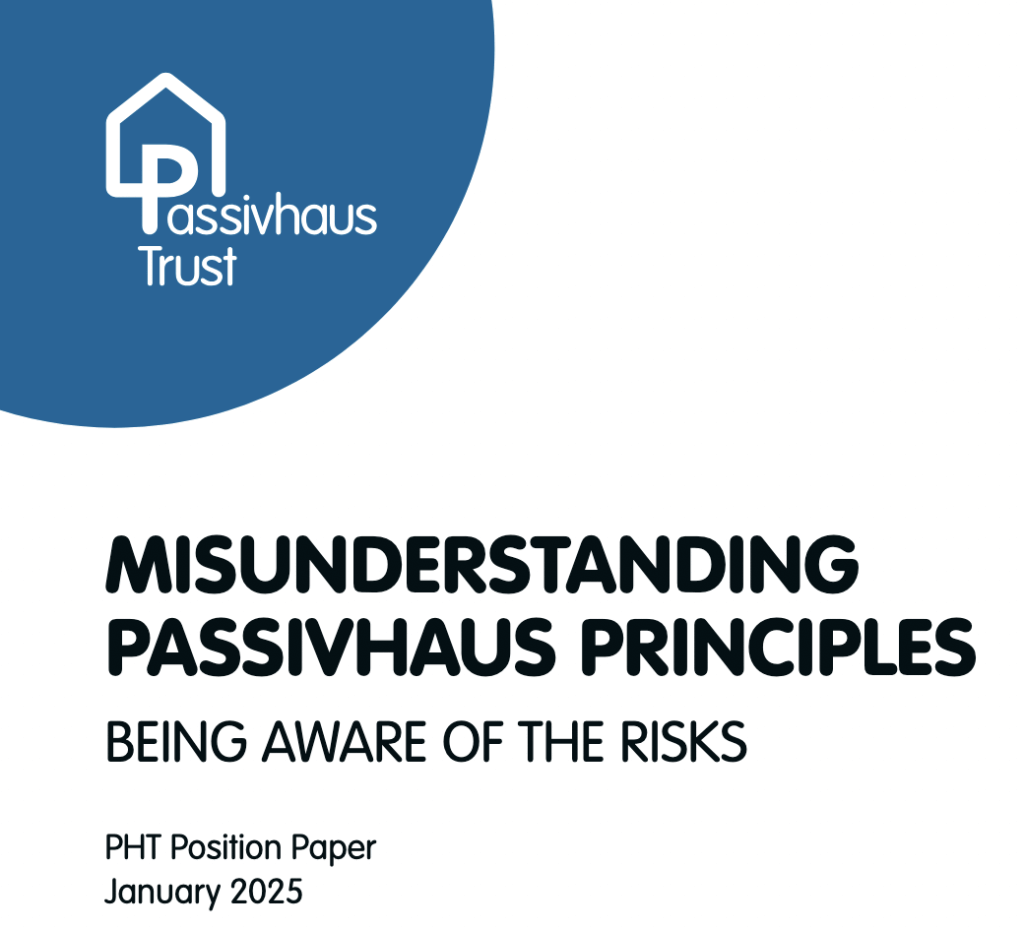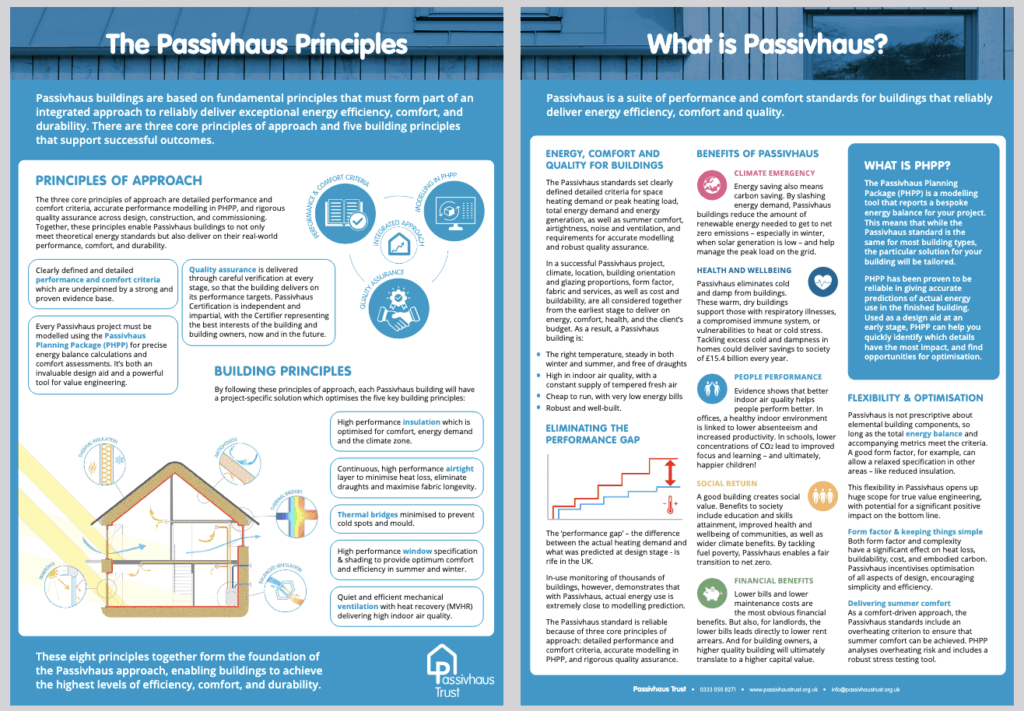Years ago I warned of what I dubbed cargo-cult architecture, where architects throw in a few high-performance components like expensive windows and lots of insulation and expect a high-performance building to magically result. It’s a recipe for disaster and particularly risks creating houses that are unbearably hot in summer. This approach is based on guesswork and magical thinking, not building science.
So I was pleased to see the UK’s Passivhaus Trust tackle this issue head-on in their recently updated position paper, Misunderstanding Passivhaus Principles. The paper is a polite and thorough dismantling of the idea that you can just pick and choose a few ‘Passivhaus principles’ and achieve a good result.
The authors here expand on a recent two-page publication (shown above) that replaces the PHI ‘five principles’ diagram we’ve all been using for years. They group eight principles into two categories: the building principles (good insulation, airtightness, high-performance windows, no thermal bridges, and mechanical ventilation) and three essential principles of approach:
- using detailed performance and comfort criteria
- accurate performance modelling in PHPP and
- rigorous quality assurance on-site.
It’s the combination of all eight principles that makes a Passive House work. Trying to do it without the modelling and quality control is like trying to bake a cake just by knowing it contains flour and sugar. You’re going to get a mess.
The paper includes two damning case studies of social housing projects in Wales where this exact thing happened. The project briefs were littered with vague, unenforceable phrases like “design inspired by Passivhaus” and “to Passivhaus standards”. The design teams didn’t engage a certified Passivhaus consultant and, crucially, didn’t do any PHPP modelling during the design phase.
The results were awful. Residents suffered from both overheating in summer and freezing cold in winter, with energy bills far higher than promised. One project saw an 18% cost increase for “low-carbon technologies” that failed to deliver. In the end, huge sums of money were spent on remedial works like adding external blinds and new heating systems—costs that would have been completely avoided if they’d just done the modelling from the start.
The most important feature of a high-performance building is energy-stage modelling. I will keep labouring this point until there is not a person left who needs to understand it. All the other stuff—the insulation, the windows, the airtightness membranes—are just components. It’s the PHPP model that shows you how they all interact as a system. It allows you to test design choices, balance heat gains and losses and avoid unintended consequences like turning a super-insulated house into a summer oven.
As the Passivhaus Trust paper states, PHPP isn’t just a compliance tool for certification; it’s an invaluable design tool. Skipping it doesn’t save money. It introduces massive risk and often leads to expensive failures and unhappy clients. So let’s stop with the cargo-cult thinking. If you want a high-performance building, do the maths first and model it!
Abstract
As awareness of the Passivhaus standard has grown, some knowledge of the fundamental building principles which all such high-performance buildings have in common – for example, appropriate levels of continuous insulation and air tightness together with Mechanical Ventilation with Heat Recovery (MVHR) – has also spread throughout the industry. This must be seen as a positive. However, this has led to projects that have declared that they are following “Passivhaus principles” because they incorporate some or all those five building principles, while neglecting to follow an integrated approach that also encompasses the principles of detailed performance and comfort criteria, accurate performance modelling in PHPP, and rigorous quality assurance across design, construction, and commissioning. Taken together, these are the eight principles that enable certified Passivhaus projects to reliably deliver so many health, comfort and energy benefits. This paper shows how attempting to incorporate some Passivhaus building principles without also following the principles of approach introduces significant risks.
Reference
Passivhaus Trust (2025). Misunderstanding Passivhaus Principles: Being aware of the risks. Version 1.2. Passivhaus Trust, London.

